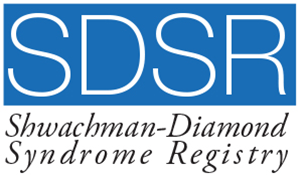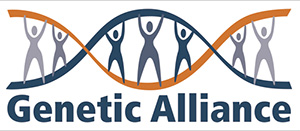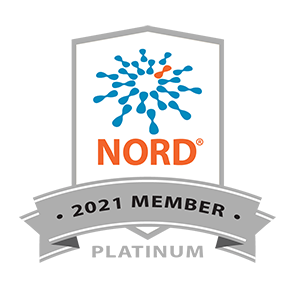About SDS
Shwachman Diamond Syndrome was first identified in 1964. It involves many systems in the body, including the pancreas, bone marrow, and skeleton.
CAUSE
SDS is caused by an autosomal genetic mutation. This means that a gene mutation is provided from each parent. The genetic mutation that causes SDS is located on the long arm of chromosome 7. However, about 10% of patients have symptoms of SDS but do not have a known genetic mutation.
EARLY SIGNS
Infants with SDS usually show symptoms early. They may have feeding problems, failure to thrive (do not gain weight), do not grow, and may have frequent infections. They may also have skeletal abnormalities.
WHAT BODY SYSTEMS ARE INVOLVED?
Many body parts are affected by SDS among them are the bone marrow, pancreas, skeleton, kidneys, liver, brain, teeth, and immune system.
PANCREATIC ISSUES
The pancreas is an organ that has two functions. It produces insulin to control blood sugars in the body. It also produces enzymes to digest food and nutrients. In patients with SDS, the part of the pancreas that produces enzymes does not work properly. This results in greasy, frequent, and foul-smelling stools. Enzyme replacement will help the patient digest food and provide needed nutrition. Because fats are not easily digested attention should be given to monitoring the levels of the fat-soluble vitamins ( A, D, E, and K) and replacement supplements provided when necessary.
In about 50% of patients, pancreatic function improves with age and enzyme replacement therapy may be discontinued. Enzymes should only be discontinued after consultation and confirmative testing by a gastroenterologist. Slow improvement in weight is usually seen but growth velocity may not improve.
Some patients also have issues with blood sugar levels.
BONE MARROW
The bone marrow produces all lines of blood cells: white cells, red cells, and platelets. In SDS patients the bone marrow does not function properly. As a result, the patient may have decreased numbers of white cells, red cells, and/or platelets.
ANEMIA
Anemia refers to a decreased number of red blood cells in the bloodstream. Red blood cells are needed to carry oxygen to the cells in the body.
NEUTROPENIA
Neutropenia is a condition caused by a reduction in the number of white blood cells called neutrophils. These cells are responsible for helping the body fight bacteria and fungal infections. Patients with an absolute neutrophil count (ANC) that is low (below 1500 per microliter) may be at risk for life-threatening infections.
THROMBOCYTOPENIA
Blood platelets clot the blood and prevent bruising. A normal platelet count is above 150,000 per microliter. A decreased number of these cells is called thrombocytopenia. If the platelet count is too low, platelet transfusions may be necessary to prevent hemorrhaging.
It is strongly recommended that every SDS patient be seen regularly by a hematologist, a physician who specializes in blood issues. The patient’s blood counts should be regularly monitored. It is further recommended that all patients have periodic bone marrow biopsies to monitor how the bone marrow is functioning.
Further complications that can develop are leukemia, myelodysplastic syndrome (MDS), and aplastic anemia. These complications are life-threatening and require immediate care by specialists who are experienced in treating SDS patients.
SKELETAL
Bone abnormalities are reported in some patients. These usually involve the hips, rib cage, femur, and tibia. If severe enough they may require surgical intervention.
LIVER
An enlarged liver and elevated liver enzymes are frequently seen in young patients. Liver enzyme levels do normalize with age. Chronic liver disease has been documented.
NEURO/PSYCH ISSUES
Developmental delays and learning difficulties are seen in some SDS patients. These may include learning disabilities, developmental delays, ADHD, and behavior issues. Testing is recommended if there is an indication of these issues.
OTHER POSSIBLE COMPLICATIONS
Less common features include dental dysplasia and increased dental caries, lung disease, testicular fibrosis, and cardiac lesions.
SDS is a very rare condition. For this reason, not many physicians are knowledgeable about it. We feel that the best possible care for your child can be obtained by taking him/her to physicians who have knowledge and experience in caring for SDS patients. We are happy to help you find a specialist.




